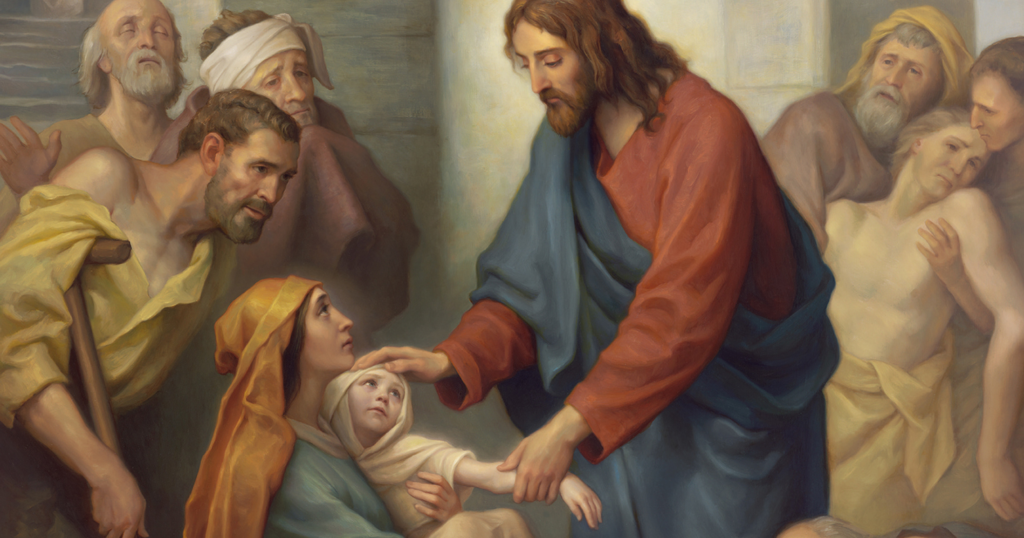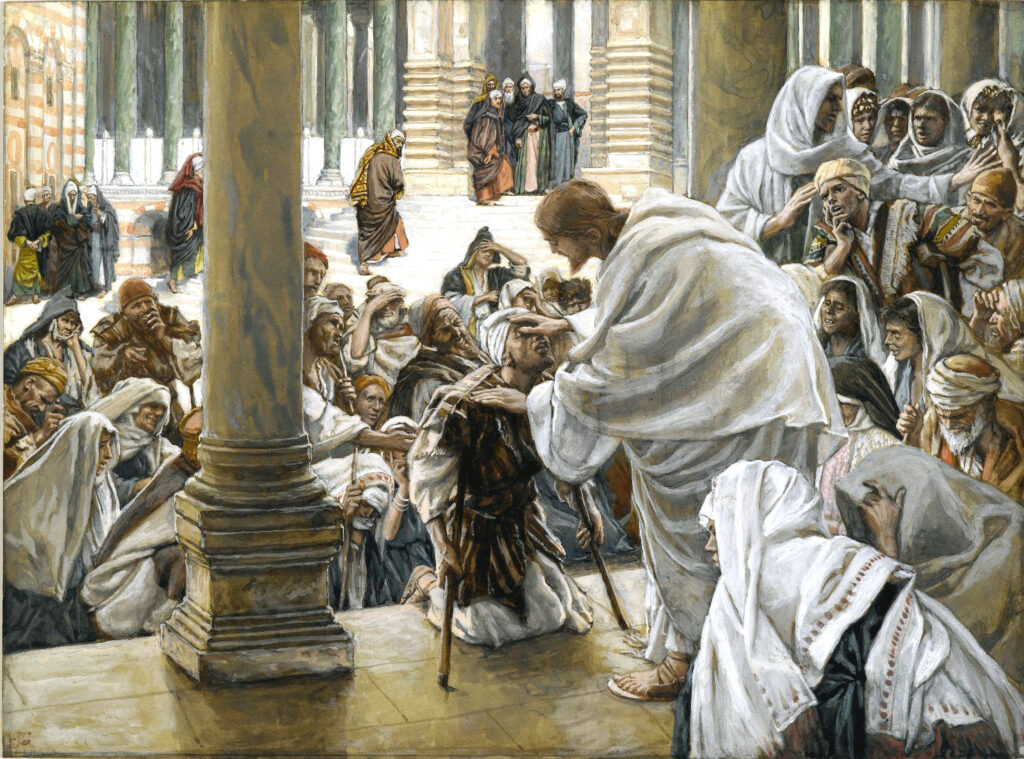Are you sick and tired of feeling sick and tired?
I love dogs. Well, I love other people’s dogs—I don’t own one. One night while channel surfing, I came across an Animal Planet episode featuring a team of veterinarians who rescue stray dogs. The images of the suffering dogs drew my attention. While the TV camera panned around an animal shelter, it honed in on one veterinarian’s efforts to save a recently rescued but sick and wounded little dog. The mutt’s hair was horribly matted, dirty, and filled with fleas. Struggling to bathe and bind the wounds of the howling dog, the veterinarian turned to the TV camera and said, “He doesn’t understand what I’m doing and that I’m trying to help him. He’s squirming and biting at me because he’s so afraid.”
As I watched the veterinarian and the dog struggle, the “still, small voice” whispered to me, “Humans are just like this frightened and sick little dog. They squirm and fight when the Savior tries to heal their emotional pain. However, no healing can take place unless they become humble and submissive to Christ’s healing hands. And becoming submissive requires the desire, faith, and diligence to be healed.” Over the years, I’ve often thought about the little dog, and how he pertains to me—to all of us at various times in our lives. Surely, Jesus Christ is the ultimate healer, but the healing process can be tedious and downright agonizing. Hence, our faith is paramount in allowing the Savior to scrub us clean and bind our wounds.

“Jesus Healing the Sick,” by Joseph Brickey, after Heinrich Hofmann.
Recently, I was reminded of this principle while watching a Brigham Young University devotional featuring Dr. Elaine Marshall, former dean of BYU’s College of Nursing. In her talk, “Learning the Healer’s Art” (October 8, 2002), Dr. Marshall uses her medical knowledge and experience to teach the art of emotional healing. The remainder of this post will focus on her observations.
First, she defines healing as “… a process of restoring and becoming whole” (para. 11). Next, she shares six lessons she has learned regarding the healer’s art:
- Healing Hurts. When I was a young nurse patients always asked, ‘Will it hurt?’ I have learned that healing hurts. Life hurts. Healing really only begins when we face the hurt in its full force and then grow through it with all the strength of our soul. For every reward of learning and growing, some degree of pain is always the price. Sometime in your life you will know a crashing crisis or heavy heartache that will threaten all sense of logic or hope or certainty—from which, no matter how you emerge nothing will ever be the same. Hurts come as unique losses, unwelcome surprises, fading hope, or grief. Some of us suffer the wrenching consequences of sin or just poor judgment. We hurt when we see our own failures or helplessly watch the unwise decisions of others. Our lives are changed forever not only by the pain but by facing our need to heal. We can partake of the healing medicine of the Atonement of our Savior, who promised, ‘I have heard thy prayer, I have seen thy tears; behold, I will heal thee’ (2 Kings 20:5).
- Healing Is Active—You Have to Be There. Your friend or your husband or wife or your mother cannot do it for you. You have to face the problem and the pain. To begin healing, you must acknowledge and feel the hurt. Only those who don’t feel, those without conscience, cannot heal. I [had] assumed cure, care, and healing to be synonymous. I have learned they are not the same. Healing is not cure. Cure is clean, quick, and done—often under anesthesia. The antibiotic kills the pathogen; the scalpel cuts out the malignancy, the medication resolves the distorted chemistry. Healing, however, is often a lifelong process of recovery and growth in spite of, maybe because of, enduring physical, emotional, or spiritual assault. It requires time. We may pray for cure when we really need healing. Whether for cell reconstruction, for nerve and muscle rehabilitation, for emotional recovery, or for spiritual forgiveness, healing needs work and time and energy. Cure is passive, as you submit your body to the practitioner. Healing is active. It requires all the energy of your entire being. You have to BE there, fully awake, aware, and participating when it happens.
- Healing is Private. Healing is not only private, it is sacred. Private healing is not healing by abandonment. There is something so sacred about partaking of the power of the Atonement to overcome suffering, disappointment, or sin that happens in the privacy of that special relationship between the mortal and the divine. Healing involves a private personal communion with the Savior, the Master Healer. It inspires a very personal reverence and awe. To say that healing is private is not to diminish the marvelous power that comes from the help and compassion of others. Indeed, private healing often may not happen without the help of others. But much of the work of healing is done alone, inside the heart, in the company of the Spirit of the Lord. Such secret healing is not a single event. It happens as a process of living. You cannot simply take off a day or start tomorrow like a new diet and return healed. It happens quietly while you face the pain. It happens over time as you live, work, study, and give to others.
- Healing Teaches Us. When we have a terrible loss or pain, we may seek to ‘get back to normal’ or to the way things were before, but they will never be the same. Pain changes us, but not in the same way that healing teaches us. Healing can help us to become more sensitive and more awake to life. Healing inspires repentance and obedience. Healing invites gifts of humility and faith. It opens our hearts to the profound complexities of truth, beauty, divinity, and grace.
- We Must Help Others to Heal. President Hinckley says, ‘Everyday, someone in your path is hurting, someone is afraid, someone feels inadequate, someone needs a friend. Someone needs you to notice, to reach out, and to help him or her heal. You may not know who that is at the time, but you can give encouragement and hope. You can help to heal wounds of misunderstanding and contention. You can serve ‘in the cause of the Master Healer’ (Gordon B. Hinckley, ‘Healing Power,’ p. 52).
- Healing is the Gift of the Savior, Who Calls, “Come unto Me.” The last and greatest lesson of healing is that it is a divine gift that is always there from a loving Heavenly Father. If you have a pain or sorrow or disappointment or sin or just a grudge that needs healing, the Savior simply says, ‘Come unto me.’ I have been humbled and amazed by how much of the Lord’s mission on this earth was devoted to healing. When Jesus called and ordained the Twelve, He specifically gave them the power to heal (Matt. 10:1, Mark 3:14-15) and instructed them to go about using their gifts ‘freely.’ As Jesus healed, the scriptures say, ‘All the people were amazed’ (Matt. 12:23). They brought their sick, their ‘blind and dumb’ (Matt. 12:22), those that were ‘possessed with a devil’ (Matt. 12:22, Mark 1:32), and their dead. They sought Him every day and into the evening. So great was His reputation and His healing power that they sought to ‘only touch the hem of His garment; and as many as touched were made perfectly whole’ (Matt. 14:36). ‘And Jesus went about all the cities and villages, teaching….preaching the gospel….and healing every sickness and every disease among the people’ (Matt. 9:35). President Gordon B. Hinckley promised: ‘Jesus of Nazareth healed the sick among whom He moved. His regenerating power is with us today. His divine teachings, His incomparable example, His matchless life, His all-encompassing sacrifice will bring healing to broken hearts, reconciliation to those who argue and shout, even peace to warring nations if sought with humility and forgiveness and love’ (Healing Power, p. 59).

Artist: James Tissott
I humbly add a few of my own observations; I’ve written about these truths in previous posts, but they are also applicable here.
At times, we are the source (intentionally or unintentionally) of another person’s pain. Surely, we should do all we can in helping others in their healing processes. However, our power or ability to help heal another person is very limited—if not impossible under the following conditions:
- When our very existence creates pain for another person. Unfortunately, our sincere attempts are often unsuccessful when trying to alleviate the pain of a person who harbors anger, resentment, etc., against us. Often times, their pain isn’t really about the person they resent. Rather, this type of distress is symptomatic of their own personal issues or turmoil. Proverbs 22:24 advises, “Make no friendship with an angry man; and with a furious man thou shalt not go.” The writer of Proverbs understands that people who harbor these powerful and negative emotions will often project them upon others. The bottom line is this: We are the masters of our own emotions. We decide for ourselves what to think and how to feel. Proverbs also says, “As a man thinketh, so is he.” Thus, to make another person responsible for our emotions means a painful life feeling wounded and powerlessness. Furthermore, we cannot really control what others think of us. We can only control what we think of others. Despite our best (or worst) intentions, people will think what they want to think. When we can accept this fact, we are more likely to inoculate ourselves against those who would wound us—while hastening our own healing process of wounds we already have.
- When a person’s happiness or sense of well-being depends upon the failure of another person. I’ve known people who took pleasure in watching me or other individuals stumble or fail. (Very ironic because I stumble and fail all the time.) Surely, we’ve all felt satisfaction when watching an adversary squirm or stumble—that’s human nature. However, our true victories don’t come by crushing those who would hurt or oppose us. (Although, disarming them is necessary.) Victory is attained by transcending our sickness, our wounds, and our feelings of anger and powerlessness through Christ’s healing Atonement.
- When a person feels a certain satisfaction or “power” in nursing and feeding his or her own pain. Surely, it’s easier to feel anger and indignation toward a real or perceived perpetrator than true remorse or accountability for our own actions or emotions. Often times, we feed our anger toward others to justify and/or sustain our pain. The fire of anger might be initially satisfying—and often serves a purpose. But, anger is a double-edged sword. To make our anger work for righteous purposes, we need to handle it with great care and restraint. Forever feeding our angry flame rather than quenching our fire—when it’s outlived its purpose—will burn and scar. Guaranteed. Dr. Marshall makes this last point:
- Make the church community a hospital, not a showcase. Elder Jeffrey R. Holland noted: The Church is more like a hospital provided for those who wish to get well . . . For some of you that is simply to live with greater faith, to believe more. For some of you it does mean to repent. Right here . . . for virtually all of us it means to live more by the promptings and promises of the Holy Ghost and to ‘press forward with a steadfastness in Christ, having a perfect brightness of hope, and a love of God and of all men’ (2 Nephi 31:20).
I’ve lived long enough to be well acquainted with emotional pain. And in my pain, I have come to know my Savior, Jesus Christ, and partake of His abounding grace within “the healing in His wings” (Malachi 4:2). We must look to Him—and Him alone—as the ultimate source of our healing. Vengeance and retribution are not tools for our ultimate healing. I’ve taken great comfort in the following passage:
For the Lord spake thus to me with a strong hand, and instructed me that I should not walk in the way of this people . . . neither fear ye their fear, nor be afraid. Sanctify the Lord of Hosts himself, and let him be your fear, and let him be your dread. And he shall be for a sanctuary.
He bids us not to follow:
Them that have familiar spirits and that peep and mutter . . . and fret themselves. And they shall look and behold trouble, and darkness, dimness of anguish, and shall be driven to darkness (2 Nephi 18: 11-22).
The Lord can indeed, be our sanctuary. However, Christ also condemns those who intentionally hurt and wound others—including people who would fight against those who sincerely and humbly follow Him. Instead of sanctuary, those “daughters of Zion who are haughty, and walk with stretched-forth necks, walking and mincing as they go,” will become their own stumbling blocks. They will have “burning instead of beauty” and “her gates shall lament and mourn, and she shall be desolate, and shall sit upon the ground” (2 Nephi 13).
Surely, our pride and vanity can be the biggest stumbling blocks in our healing process. Even more, Christ is talking directly to women in these particular passages. So, we might want to honestly ask ourselves: Do we really want to be healed? Because in order to be healed, our pride, vanity, and contentious spirit have to go. It’s not easy, and it is a process. But, if we insist on forever opening and licking our wounds or making ourselves sick, we are fomenting contention within ourselves and toward others—and thus refusing our Savior’s healing hands.
Thankfully, submitting to Christ means hope. Like Dr. Marshall says, even though the healing process hurts as much as getting wounded or being sick—at least there’s wellness on the horizon. Yes, Christ’s “yoke is easy and His burden is light.” But to get to the “easy and light” part, we have to want healing by humbly approaching the Savior and admitting we’re sick and are unable to heal ourselves. This also means baring our wounds and bracing ourselves for the sting of His antiseptic. And that’s just the beginning.
Ready to get well?
Julie

